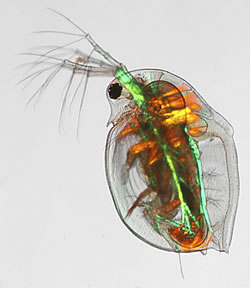Over-regulation of chemical risks imposes costs on industry that are unwarranted, thereby weakening global economies and their recovery from the current economic crisis towards long-term sustainability.
 Conversely under-regulation leads to health effects for citizens, non-human species and ecosystems.
Conversely under-regulation leads to health effects for citizens, non-human species and ecosystems.
The most efficient and humane approach is to regulate toxicity as accurately and robustly as possible, for both single substances and mixtures, without relying on costly and invasive mammalian models. This can be achieved by using ultra-high-throughput toxicity testing by innovative laboratory automation to make regulatory systems, premised on 'tolerable risk', more rigorous, precise and predictive than they have ever been.
Delivering such 21st-century science is what the international Consortium for Environmental Omics and Toxicology (CEOT), led by University of Birmingham scientists, is aiming to do, by working in collaboration with governments, industry and non-government organisations around the globe.
Daphnia shares the largest number of genes with humans from among the other invertebrate model species
 The aquatic invertebrate Daphnia (waterflea) plays a fundamental role in detecting toxicity in chemicals in a state-of-the-art laboratory using high-throughput testing, making it possible to identify which compounds that are used in domestic and industrial settings are potentially causing harm to the environment.
The aquatic invertebrate Daphnia (waterflea) plays a fundamental role in detecting toxicity in chemicals in a state-of-the-art laboratory using high-throughput testing, making it possible to identify which compounds that are used in domestic and industrial settings are potentially causing harm to the environment.
Daphnia has a remarkable range of adaptive responses to ecological conditions, and shares the largest number of genes with humans from among the other invertebrate model species.
Birmingham researchers have expertise in developing new techniques for measuring environmental stresses using this organism. The team focuses on Daphnia at a molecular level, studying the gene expression and the metabolism of the organism. When exposed to compounds, Daphnia change, giving an early warning of pollutants in the environment. These stresses on the Daphnia can induce a specific type of signature – the changes in the molecules denote which pollutants are causing stress to the animal.
For ultra-high-throughput testing, the team is developing the databases that will provide the molecular profiles that will indicate which compounds are threats to environmental and human health.